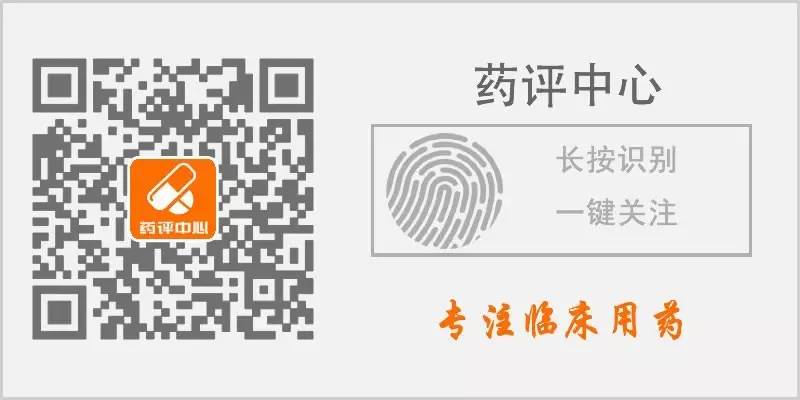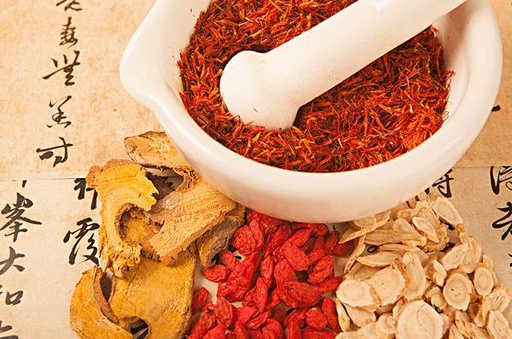According to Traditional Chinese Medicine (TCM) theory, the common cold is an external pathogenic disease caused by the invasion of external evils, primarily categorized into two types: Wind-Cold and Wind-Heat. The treatment for different types of colds must be approached differently.
1. Wind-Cold vs. Wind-Heat
In TCM etiology, there is the concept of Wind evil. When Wind evil invades the body together with Cold evil, it is termed Wind-Cold syndrome (Feng Han Zheng); when it invades with Heat evil, it is termed Wind-Heat syndrome (Feng Re Zheng). For example, during the autumn and winter seasons, the combination of Wind and Cold is common, hence Wind-Cold colds are prevalent; during the spring and summer, the combination of Wind and Heat is more common, leading to more cases of Wind-Heat colds.
However, it cannot be said that Wind-Cold colds only occur in winter and Wind-Heat colds only in summer. If there is a sudden change in climate during summer, with abnormal cold and heat, exposure to cold, excessive consumption of cold foods, or getting wet in the rain, symptoms of Wind-Cold colds can appear. Additionally, individuals with a deficiency of Yin or a Yang-predominant constitution may also exhibit symptoms of Wind-Heat.
Therefore, the pathogenicity of Wind-Cold or Wind-Heat is not only related to the seasons but also closely linked to individual constitution and lifestyle factors.
2. Differentiating Wind-Cold from Wind-Heat
Both Wind-Cold and Wind-Heat can cause fever and head and body pain, and an elevated temperature does not necessarily equate to a Heat syndrome; thus, when differentiating between Wind-Cold and Wind-Heat, the presence and severity of fever and head and body pain are not the most important factors. The main distinctions between Wind-Cold and Wind-Heat are:
1.Chills severity.One of the key characteristics of Wind-Cold colds is a strong aversion to wind and cold, while Wind-Heat colds may present with mild chills but will not have chills and shivering.
2.Sore throat.The presence or absence of pain and swelling in the throat is an important indicator for diagnosing Wind-Heat colds, but those with Wind-Cold colds may also have slight throat redness. However, if the throat is significantly red or congested, it is a typical manifestation of Wind-Heat.
3.Nasal discharge consistency.In Wind-Cold colds, the nasal discharge is clear, while in Wind-Heat colds, the discharge is thicker and yellow.
4.Thirst.In the early stages of Wind-Cold colds, there is no thirst because the body fluids are not damaged. In contrast, Wind-Heat colds typically present with noticeable thirst early on due to the invasion of Heat evil affecting body fluids.
Symptoms and Signs of Wind-Cold and Wind-Heat Colds
|
Type |
Symptoms |
Signs |
|
Wind-Cold Cold |
Aversion to wind and cold |
Pale face and cold limbs |
|
Clear nasal discharge and nasal congestion |
Light red tongue with thin white coating |
|
|
White phlegm and light cough |
Throat not red or slightly red |
|
|
Throat itchiness |
Tonsils not congested |
|
|
No sweating, no thirst |
||
|
Wind-Heat Cold |
Heat without cold |
Red face and eyes |
|
Thick yellow nasal discharge |
Red tongue with yellow coating |
|
|
Sore throat and hoarseness |
Congested and red tonsils |
|
|
Constipation |
Swollen tonsils |
|
|
Sweating and thirst |
3. Different Treatments for Wind-Cold and Wind-Heat
The basic treatment principle for Wind-Cold colds is to release the exterior with warm acrid herbs. Commonly used TCM formulas include Ganmao Qingre Granules, Ganmao Soft Capsules, and Ganmao Shufeng Tablets; the basic treatment principle for Wind-Heat colds is to release the exterior with cool acrid herbs. Commonly used TCM formulas include Shuanghuanglian Oral Liquid, Yinqiao Jiedu Tablets, and Banlangen Granules.
It is important to note:
If there is no improvement after three days of medication, it may indicate improper medication or that the condition is worsening. In such cases, it is essential to visit a reputable hospital for a proper diagnosis and treatment to avoid delaying the condition.
TCM Formulas for Treating Wind-Cold Colds
|
TCM Formula |
Ingredients |
Functions |
|
Ganmao Qingre Granules |
Jingjie (Schizonepeta), Bohe (Peppermint), Fangfeng (Siler), Chaihu (Bupleurum), Zisuye (Perilla Leaf), Gegen (Kudzu Root), Jiegeng (Platycodon), Kuxingren (Bitter Apricot Kernel), Baizhi (Angelica Dahurica), Kudi (Bitter Herb), Lugen (Reed Rhizome) |
Disperse Wind and Cold, Release the Exterior and Clear Heat. Used for Wind-Cold colds with symptoms of headache, fever, aversion to cold, clear nasal discharge, and dry cough. |
|
Ganmao Soft Capsules |
Qianghuo (Notopterygium), Mahuang (Ephedra), Guizhi (Cinnamon Twig), Jingjie (Schizonepeta), Fangfeng (Siler), Baizhi (Angelica Dahurica), Chuanxiong (Ligusticum), Shichangpu (Acorus), Gegen (Kudzu Root), Bohe (Peppermint), Kuxingren (Bitter Apricot Kernel), Danggui (Angelica Sinensis), Huangqin (Scutellaria), Jiegeng (Platycodon). |
Disperse Wind and Clear Heat. Used for exterior Wind-Cold causing headache, fever, nasal congestion, clear nasal discharge, aversion to cold without sweating, and body aches. |
|
Wind-Cold Cold Granules |
Mahuang (Ephedra), Gegen (Kudzu Root), Zisuye (Perilla Leaf), Fangfeng (Siler), Guizhi (Cinnamon Twig), Baizhi (Angelica Dahurica), Chenpi (Dried Tangerine Peel), Kuxingren (Bitter Apricot Kernel), Jiegeng (Platycodon), Gancao (Licorice), Ganjiang (Dried Ginger). |
Release the Exterior and Induce Sweating, Disperse Wind and Cold. Used for Wind-Cold colds with symptoms of fever, headache, aversion to cold, no sweating, cough, nasal congestion, and clear nasal discharge. |
|
Chuanxiong Tea Granules |
Chuanxiong (Ligusticum), Baizhi (Angelica Dahurica), Qianghuo (Notopterygium), Xixin (Asarum), Fangfeng (Siler), Bohe (Peppermint), Jingjie (Schizonepeta), Gancao (Licorice). |
Disperse Wind and Alleviate Pain. Used for Wind evil headache, or with aversion to cold, fever, and nasal congestion. |
|
Ganmao Shufeng Granules |
Mahuang (Ephedra), Kuxingren (Bitter Apricot Kernel), Guizhi (Cinnamon Twig), Baishao (White Peony, wine-fried), Zisuye (Perilla Leaf), Fangfeng (Siler), Duhuo (Angelica Pubescens), Jiegeng (Platycodon), Guya (Barley Sprouts, fried), Gancao (Licorice), Dazao (Jujube), Shengjiang (Fresh Ginger). |
Disperse Cold and Release the Exterior, Regulate the Lung and Middle. Used for Wind-Cold colds causing fever, cough, headache, aversion to cold, clear nasal discharge, body aches, and fatigue. |
|
Formula Explanation |
Commonly used herbs: Jingjie, Fangfeng, Qianghuo, Suye, Baizhi, Jiegeng, Baiqian, Guizhi, Congbai (Scallion), Dandouzi (Fermented Soybean) etc. Modifications: For significant headache, add Gegen; for aversion to cold without sweating, add Mahuang; for vomiting, add Banxia (Pinellia), Shengjiang (Fresh Ginger); for exterior cold with interior heat, add Huangqin (Scutellaria), Banlangen (Isatis). |
|
|
Precautions |
Patients with hypertension and heart disease should use caution with formulas containing Mahuang. |
TCM Formulas for Treating Wind-Heat Colds
|
TCM Formula |
Ingredients |
Functions |
|
Banlangen Granules |
Banlangen (Isatis) |
Clear Heat and Detoxify, Cool Blood and Benefit the Throat. Used for sore throat and dryness caused by excess Heat in the Lung and Stomach; acute tonsillitis with the above symptoms. |
|
Shuanghuanglian Oral Liquid |
Jinyinhua (Honeysuckle), Huangqin (Scutellaria), Lianqiao (Forsythia) |
Disperse Wind and Release the Exterior, Clear Heat and Detoxify. Used for colds caused by Wind-Heat with symptoms of fever, cough, and sore throat. |
|
Lanqun Oral Liquid |
Banlangen (Isatis), Huangqin (Scutellaria), Zhizi (Gardenia), Huangbai (Phellodendron), Pantaohai (Sterculia) |
Clear Heat and Detoxify, Benefit the Throat and Reduce Swelling. Used for acute pharyngitis and excess Heat in the Lung and Stomach causing sore throat, dryness, and burning sensation. |
|
Qingkailing Granules |
Bile Acid, Mother of Pearl, Pig Deoxycholic Acid, Zhizi (Gardenia), Water Buffalo Horn, Banlangen (Isatis), Huangqin (Scutellaria), Jinyinhua (Honeysuckle) |
Clear Heat and Detoxify, Calm the Mind. Used for Wind-Heat with internal Heat causing high fever, agitation, sore throat, red tongue, yellow coating, and rapid pulse; upper respiratory infections, viral colds, acute tonsillitis, acute pharyngitis, acute bronchitis, and high fever. |
|
Wind-Heat Cold Granules |
Banlangen (Isatis), Lianqiao (Forsythia), Bohe (Peppermint), Jingjie (Schizonepeta), Sangye (Mulberry Leaf), Lugen (Reed Rhizome), Niubangzi (Burdock Seed), Juhua (Chrysanthemum), Kuxingren (Bitter Apricot Kernel), Sangzhizi (Mulberry Branch), Liushenqu (Fermented Grain) |
Disperse Wind, Clear Heat, Benefit the Throat and Detoxify. Used for Wind-Heat colds with symptoms of fever, sweating, nasal congestion, headache, sore throat, cough, and phlegm. |
|
Formula Explanation |
Commonly used herbs: Jinyinhua, Lianqiao, Bohe, Niubangzi, Dandouzi, Jingjie, Jiegeng, Gancao, Danzhuye (Bamboo Leaf), Sangye, Daqingye (Big Green Leaf) etc. Modifications: For high fever, add Zhizi (Gardenia), Huangqin (Scutellaria); for red and swollen sore throat, add Chan Tui (Cicada Slough), Dandelion, Xuan Shen (Scrophularia); for constipation, add Zhi Shi (Bitter Orange), Da Huang (Rhubarb). |
|
|
Precautions |
Not suitable for those with Wind-Cold colds. Use with caution in patients with chronic illness and diarrhea. |
TCM Formulas for Treating Influenza
|
TCM Formula |
Ingredients |
Functions |
|
Lianhua Qingwen Granules |
Lianqiao (Forsythia), Jinyinhua (Honeysuckle), Mahuang (Ephedra, roasted), Kuxingren (Bitter Apricot Kernel, roasted), Shigao (Gypsum), Banlangen (Isatis), Mianmaguan (Houttuynia), Yuxiang (Patchouli), Dahuang (Rhubarb), Hongjingtian (Rhodiola), Bohe (Peppermint), Gancao (Licorice) |
Clear epidemic toxins, detoxify, and release the Lung heat. Used for treating influenza with symptoms of fever or high fever, chills, muscle aches, nasal congestion, cough, headache, dry throat, and red tongue with yellow coating. |
|
Lingyang Ganmao Soft Capsules |
Lingyang Horn, Jinyinhua (Honeysuckle), Jiegeng (Platycodon), Lianqiao (Forsythia), Jingjie (Schizonepeta), Danzhuye (Bamboo Leaf), Gancao (Licorice), Niubangzi (Burdock Seed), Dandouzi (Fermented Soybean), Bohe (Peppermint), Peppermint Oil. |
Clear Heat and Detoxify, Disperse Wind and Release the Exterior: Prevent influenza. Used for early onset of cold with aversion to cold, fever, muscle aches, headache, sore throat, and runny nose. |
Commonly Used TCM Formulas for Treating Colds
|
Wind-Cold Cold Medications |
Wind-Heat Cold Medications |
Qi Deficiency and Other Cold Medications |
|
Ganmao Qingre Granules, Ganmao Soft Capsules, Ganmao Shufeng Tablets, Wind-Cold Cold Granules, Jingfang Granules, Jiedu Cold Tablets, Tiaowei Xiaoshi Pills, Jiangzao Quchan Powder, Pugang Tablets, Exterior Wind-Cold Granules, Sweating Powder, Heat Pills, Sufeng Liupai Pills, Zhengqi Tablets. |
Wind-Heat Cold Granules, Lingqiao Jiedu Pills, Sangju Cold Tablets, Yinqiao Jiedu Tablets, Yinchai Granules, Shuanghuanglian Oral Liquid, Chaihu Oral Liquid, Compound Honeysuckle Powder, Compound Sangju Cold Powder, Compound Sangju Cold Tablets, Compound Four Seasons Green Tablets, Compound Wild Chrysanthemum Cold Granules, Ganmao Shu Granules, Vitamin C Yinqiao Tablets, Ganmao Jiedu Powder, Refined Yinqiao Jiedu Tablets, Qingre Cold Powder, Pediatric Cold Granules, Pediatric Heat Speed Qing Oral Liquid, Pediatric Wind-Heat Qing Oral Liquid, Pediatric Jiedu Granules, Pediatric Qingyan Powder. |
Shensu Pills, Ganmao Jiedu Pills, Xiangju Cold Granules, Sangjiang Cold Tablets, Cold Relief Powder, Ganmao Jiedu Granules, Qingre Ling Granules, Compound Huoxiang Tablets, Jingfang Baidu Tablets, Jiawei Huoxiang Zhengqi Pills, Jingju Cold Tablets, Meisu Powder, Ganmao An Tablets, Ganmao Ling Powder, Ganmao Ling Soft Capsules, Compound Pugongying Tablets, Gante Ling Soft Capsules, Shanfeng Stop Capsules, Xiangshi Shuangjie Bagged Powder, Ganmao Cough Powder. |
 Please long press the QR code to follow the Drug Evaluation Center!
Please long press the QR code to follow the Drug Evaluation Center!

